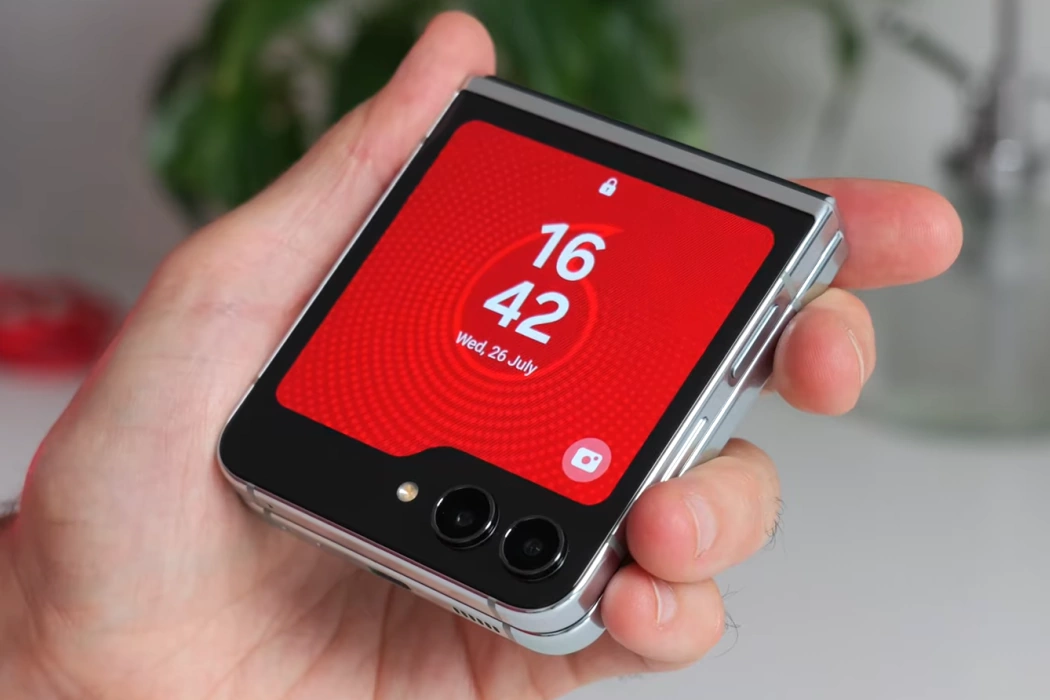The Samsung Galaxy Z Flip 5 presents a foldable smartphone experience that delivers exceptional features and performance. Nonetheless, a subset of users has encountered occasional overheating concerns with these devices. Should you find yourself facing a similar predicament, there’s no need to fret!
Below, we’ve compiled a set of effective strategies to tackle the overheating issue on your Samsung Galaxy Z Flip 5.
Thankfully, there are several solutions you can explore to alleviate this concern. Let’s delve into them.
Tips to Address Galaxy Z Flip 5 Overheating Problem
1. Restart Your Device
Minor technical hitches can sometimes lead to overheating. A straightforward reboot can help rectify these glitches and alleviate the problem. Here’s how you can do it:
- Press and hold the Volume Down and Power buttons concurrently.
- Release the buttons when the Power Off prompt becomes visible.
- Tap on Restart and then confirm by tapping Restart again. Allow the device to reboot.
2. Activate Light Performance Mode
The Light Performance mode is a useful device optimization feature on Samsung devices including the Samsung Galaxy Z Flip 5. It prioritizes cooling efficiency and battery longevity over processing speed.
Choose between the standard profile and the light profile to activate this mode:
- Swipe down the notification panel and locate the Performance profile icon.
- On the Performance profile page, select Light performance mode.
3. Utilize the Optimize Now Feature
When battery usage, storage, memory, and security settings are not optimized, it can contribute to overheating. Follow these steps to optimize these aspects:
- Access Settings » Battery and device care.
- Tap Optimize now to optimize battery usage, storage, memory, and security.
4. Place Unused Apps in Sleep Mode
Unused apps running in the background can also trigger overheating. Address this by placing them in sleep mode using these steps:
- Navigate to Settings » Battery and device care » Battery.
- Tap on Background usage limits.
- Activate the toggle switch next to Put unused apps to sleep.
The device will automatically manage unused apps.
5. Force Stop Background Apps
Certain apps persistently operate in the background even when not in use, leading to overheating. Rectify this by forcibly stopping them:
- Go to Settings » Apps.
- Tap on the app icon you wish to halt and then select Force stop.
- Confirm by tapping OK.
6. Enable Power Saving Mode
The power saving mode deactivates specific features, extending battery life and preventing overheating.
Activate it using the following steps:
- Access Settings » Battery and device care » Battery.
- Toggle Power saving to the “on” position.
7. Diminish Screen Brightness
The device’s screen consumes significant battery power. Higher brightness levels lead to more power consumption and, subsequently, overheating. Adjust the screen brightness as follows:
- Navigate to Settings » Display.
- Slide the Brightness slider to the left.
Additionally, disable Adaptive brightness using the adjacent toggle switch.
8. Disable Always On Display
While the Always On Display is convenient, it can contribute to battery usage and potential overheating.
Deactivate it as follows:
- Go to Settings » Lock Screen.
- Toggle off the Always On Display switch.
9. Check Your Charger
If overheating occurs during charging, it’s possible that the charger cable is faulty. Ensure you’re using a genuine Samsung charger, as compatibility issues can cause overheating and battery damage.
10. Refrain from Simultaneously Running Multiple Apps
Running multiple apps concurrently not only drains battery but also intensifies CPU usage, potentially leading to overheating. Close running apps using these steps:
- Tap the Application key at the bottom left of the screen.
- Swipe up on any running app to close it. Repeat for other apps.
- Alternatively, tap Close all to shut down all apps at once.
11. Avoid Using the Phone in Hot Environments
Extreme heat environments, like direct sunlight, can trigger overheating in all smartphones. If overheating occurs in such conditions, transfer the device to a cooler environment to allow it to cool down.
12. Remove Accessories
Improperly ventilated phone covers and faulty OTG Pen Drives can trap heat and cause overheating. If this happens, remove the cover, let the device cool down, and then reevaluate. Moreover, switch to a genuine and compatible phone cover or OTG Pen Drive if necessary.
13. Inspect for Problematic Apps
Malicious or poorly coded apps might induce overheating. Detect and eliminate such apps using these steps:
- Hold the Power Down and Power keys simultaneously to prompt the Power Off menu.
- Release the button, then tap and hold the Power Off icon and select Safe Mode.
In Safe Mode, uninstall the suspect third-party app. If the issue persists, repeat the process for other apps.
14. Deactivate Unused Features
Features like Bluetooth, Wi-Fi, NFC, and location services, when unused, can contribute to overheating.
Turn them off with these instructions:
- Access Settings » Connections and disable Wi-Fi, Bluetooth, and NFC using the respective toggle switches.
- Access Settings » Connections » More connection settings and switch off Nearby Devices Scanning.
- In Settings » Location, turn off Location using the toggle switch.
15. Perform a Factory Reset
As a final measure, perform a factory reset to gauge whether the overheating issue is resolved.
Remember to back up essential data before proceeding:
- Access Settings » General Management » Reset.
- Select Factory data reset and confirm by tapping Reset.
- Provide your PIN, password, or pattern if prompted.
- Tap Delete All and allow the device to complete the reset process.
If none of these solutions rectify the overheating problem, consider seeking professional assistance. Visit a Samsung service center for a thorough manual inspection of the device’s battery and charging port.

